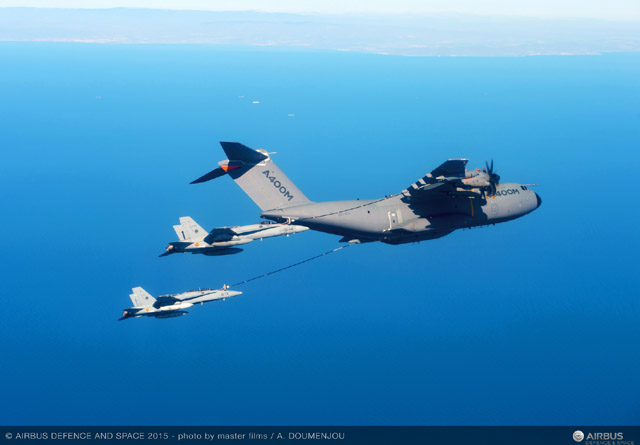Leeham News and Analysis
There's more to real news than a news release.
Boeing’s dedicated freighters views an improving market
Subscription Required
By Scott Hamilton and Bjorn Fehrm
Introduction
Feb. 22, 2015: An improving global freight market gives Boeing hope that air cargo demand will support the production of two new main-deck freighters a month for years to come. Boeing is struggling to sell 747-8Fs to keep the 747 line alive and needs to sell the 777F to support its goal of maintaining the current 777 production rate of 100/yr through the transition in 2020 to the new 777X.
Randy Tinseth, VP Marketing for Boeing included the projection as a passing reference in remarks Feb. 11 to the 14th Annual Conference of the Pacific Northwest Aerospace Alliance in Lynnwood (WA). The following week we spoke at length with Tom Crabtree, Boeing’s Regional Director, Airline Market Analysis, Marketing & Business Development, about the long-suffering global cargo market and Boeing’s forecast for recovery.
Summary
- Increasing reliance on belly capacity doesn’t negate need for large main deck freighters, Boeing says.
- Boeing sees need for two new-build, large freighters per month.
- Accepting Boeing’s demand forecast, Leeham Co. sees another production rate cut for the 747-8.
Odds and Ends: Turkish tests A380; Boeing’s cash out; A400M milestone before Airbus Group results
18 Feb 2015: Turkish Airlines is contemplating testing A380 operations according to Blomberg by wet leasing two A380 from Malaysian Airlines. Turkish did the same when they tested the Boeing 777 before ordering it, then by wet leasing 777 from Jet Airways.
The deal would be good for both Turkish Airlines which could test the A380 to see if there is sufficient demand on their densest routes and for Malaysian Airlines as recent disasters has meant they no longer need the capacity of their six A380.
Probable destinations for Turkish would be London Heathrow and JFK. The two aircraft would be operated by Malaysian Airlines pilots and Malaysian would also furnish half the cabin crew during the first six months, the other half coming from Turkish. After the initial period there would be a dry lease phase where Turkish would continue with own crews. A third backup aircraft should be part of the deal.
Boeings CEO, Jim McNerney, has told investors at a Barclay’s investor conference that Boeing can use of to 80% of its free cash flow to pay back to investors without endangering planned R&D projects reports Reuters. Partly this comes from being able to keep the 777 production rates at around the current 100 aircraft per year in the bridge to the 777X. To entice airlines to continue buying the present 777, Boeing is working on improvements to the aircraft that will increase the efficiency by 2 %, half of which will be coming from improved GE90 engines and half from airframe changes.
McNerney further said the higher than expected deferred 787 productions costs were due to investments in production methods and the labor costs not coming down as expected. He also commented on the work on a new aircraft for the market between the present 737 and 787, “the 757 market” where he said the only thing which is clear is that the airlines want a slightly larger aircraft and we don’t see the market needing a solution in the near to mid term.
Airbus Groups results will be announced in a press conference from Munich Friday next week and their Military aircraft division is working on the outstanding improvements they owe A440M customers. Timely before the press conference they have now demonstrated the A400M working as a combined logistical transporter and tanker. In a series of rendezvous over four flights they transferred a total of 27 tonnes of fuel to two Spanish Air Force F18.
From the press release: “With a basic fuel capacity of 50.8 tonnes which can be increased by the use of extra cargo hold tanks, the A400M is the most capable tactical tanker in the market. The standard A400M aircraft has full provisions for air-to-air refuelling (AAR) operations already installed and only requires the rapid installation of the optional air-to-air refuelling kit to become a tanker.”
Our article shows that this is but one of the capabilities that should have been in delivered aircraft by now, Airbus is expected to announce further provisions for A400M development at the event.
Odds and Ends: Tax breaks and job guarantees; New airline analysis blog
Feb. 17, 2015: Tax breaks and job guarantees: Boeing’s two largest unions in Washington State appear to be making headway this legislative session to get a bill on the floor for a vote that would retroactively tie 2013 tax breaks to a guarantee of jobs.
It’s less likely that the legislation will include a minimum wage component.
The tax breaks, hastily approved by the Legislature in November 2013, provided for $8.7bn in tax breaks to 2040 in return for Boeing locating the 777X assembly line and wing production in Everett (WA). The tax breaks are not only for Boeing, but available across the supply chain.
But there were no job guarantees, SPEEA and the IAM 751 warned legislators, and without them in the bill, they predicted Boeing would move jobs out of state.
That’s exactly what happened.
Playing number games with the A380
Feb. 15, 2015: Orders for the Airbus A380 have been slow, almost glacial, since the program was launched in 2000. Despite a 20-year forecast then and every year since by Airbus that suggests there is a need for 1,200-1,700 Very Large Aircraft (including freighters), sales of the A380 and Boeing’s 747-400/8 have never reached a point that support the forecast.
Airbus’ latest forecast now is for around 1,500 VLAs, including freighters.
Slow sales hang over the prospect of developing an A380neo. We concluded last year that Airbus had to proceed with the neo in order to spur sales. The commercial viability is a matter of great debate, but Airbus Commercial CEO Fabrice Bregier said last month Airbus will produce a neo, and even stretch the airplane.
Aviation consultant Richard Aboulafia, a critic of the A380 from the get-go, thinks Airbus would be nuts to launch a neo. At the Pacific Northwest Aerospace Alliance conference last week in Lynnwood (WA), in the heart of Boeing country, Aboulafia renewed his decades-long criticism of the airplane.
PNAA Conference: Airbus says A320 cancellations not as bad as numbers suggest
Feb. 12, 2015: Simon Pickup, Strategic Marketing Director, Airbus, took issue (no surprise there) with Boeing’s Randy Tinseth, VP Marketing, at the Pacific Northwest Aerospace Alliance conference today in Lynnwood (WA), and Tinseth’s barb that Airbus had a record year of 340 cancellations.
One hundred fifty of the A320ceo cancellations were swaps to A320neo orders, so the numbers weren’t as bad as numbers appeared, Pickup says. Read more




